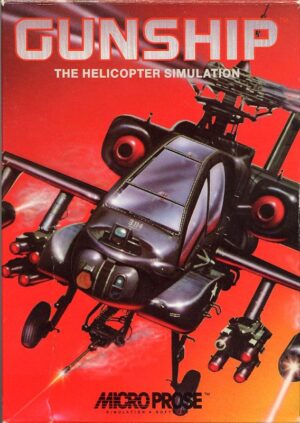Retro Replay Review
Gameplay
Crusade in Europe places you squarely in command of Allied or Axis forces during the climactic campaigns of 1944–45, offering a turn-based, hex-based framework that emphasizes tactical planning and resource management. Each turn represents a careful balance of movement, supply lines and combined arms attacks: armored divisions punch through open terrain while infantry units secure towns and bridges. Victory hinges not merely on raw strength but on anticipating enemy reinforcements, exploiting terrain, and sequencing your offensives to avoid overextension.
With only five core scenarios—ranging from the Normandy landings to the final push into Germany—the game might seem limited at first glance. However, each scenario comes with multiple variants, tweaking starting deployments, reinforcement schedules and weather conditions. These options create a surprising breadth of replayability. Beginners can start on the lowest difficulty to learn basic mechanics, while veterans can crank up enemy initiative and fog of war to simulate the chaotic fog of battle.
A notable feature is the choice between traditional board-game symbols and more modern unit icons. If you’ve grown up on tabletop wargames, the NATO-style counters feel immediately familiar; if you prefer a sleeker digital aesthetic, the unit icons convey formations at a glance. Crusade also supports hotseat play, letting two players share the same keyboard and alternate turns—a welcome nod to the social roots of wargaming and a great way to test your mettle against a human opponent.
Graphics
By mid-1980s standards, Crusade in Europe’s graphics are functional rather than flashy, but that’s exactly the point: the map screens and unit displays are designed for clarity and ease of use. Terrain types—plains, forests, hills and rivers—are distinguished by simple color fills and borders, ensuring you never lose track of hex control. Unit counters or icons are crisply rendered in contrasting colors, which helps when dozens of units crowd a frontline hex.
The user interface leans heavily on menu-driven commands and keyboard shortcuts, echoing MicroProse’s design philosophy of the era. While there’s no mouse support on some original platforms, navigating orders remains relatively painless once you memorize a handful of keystrokes. The visual language is minimalist, but the game compensates with detailed on-screen information: movement allowances, combat factors and supply status are never more than a glance away.
Loading screens and map‐drawing routines may feel slow by today’s standards, but they also build a certain anticipation before each turn settles in. There’s an undeniable charm in watching the map redraw as Allied reinforcements stagger onto the field or German units frantically retreat. In short, Crusade’s visuals are all about function and historic flavor rather than spectacle, and they succeed admirably on those terms.
Story
Unlike narrative‐driven adventures, Crusade in Europe tells its story through scenario design and historical context. The manual—peppered with maps, order‐of‐battle tables and essays by Sid Meier and Ed Bever—sets the stage with in-depth research. Each scenario recreates pivotal moments such as the Omaha Beach landings or the breakout from the Normandy bocage, allowing players to re-write history one hex at a time.
As you progress through campaigns, the unfolding “story” emerges from battlefield developments: stalled offensives, breakthrough opportunities, encirclement risks and frantic counterattacks. There’s a genuine sense of drama when your supply lines threaten to snap or when enemy armor rolls up the flank. Though there are no cutscenes or voiceovers, the combination of historical accuracy and player agency creates a compelling, personalized narrative.
The manual’s narrative annotations lend depth to otherwise abstract wargame mechanics. You learn why certain roads were vital supply arteries, how weather grounded air support, and why terrain features shaped entire campaigns. This blend of text and gameplay turns each hex into a microcosm of World War II strategy, making Crusade in Europe as much an interactive history lesson as a grand tactical challenge.
Overall Experience
Crusade in Europe remains a landmark in early computer wargaming, showcasing the collaborative genius of Sid Meier and Ed Bever at MicroProse. Its steep learning curve and deliberate pacing may deter casual action-game fans, but for history buffs and strategy enthusiasts, the payoff is considerable. Every decision—from allocating artillery barrages to timing armored thrusts—carries weight, and victory feels earned.
The game’s depth and historical fidelity have aged surprisingly well. Modern players may miss conveniences like built-in tutorials or undo buttons, but the robust scenario editor and hotseat mode add layers of flexibility. Whether you’re reliving D-Day’s hedgerow fights or pressing toward the Rhine, each playthrough unveils new tactical puzzles and “what-if” possibilities.
Ultimately, Crusade in Europe offers a rigorous, research-driven experience that stands as a testament to mid-1980s design. Its no-frills presentation channels your focus into strategic thinking and historical immersion. If you appreciate detailed wargames that reward meticulous planning and immerse you in the ebb and flow of World War II’s greatest theatre, Crusade in Europe is a timeless classic worthy of your attention.
 Retro Replay Retro Replay gaming reviews, news, emulation, geek stuff and more!
Retro Replay Retro Replay gaming reviews, news, emulation, geek stuff and more!









Reviews
There are no reviews yet.